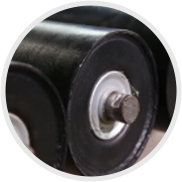 Afrikaans
Afrikaans  Albanian
Albanian  Amharic
Amharic  Arabic
Arabic  Armenian
Armenian  Azerbaijani
Azerbaijani  Basque
Basque  Belarusian
Belarusian  Bengali
Bengali  Bosnian
Bosnian  Bulgarian
Bulgarian  Catalan
Catalan  Cebuano
Cebuano  Corsican
Corsican  Croatian
Croatian  Czech
Czech  Danish
Danish  Dutch
Dutch  English
English  Esperanto
Esperanto  Estonian
Estonian  Finnish
Finnish  French
French  Frisian
Frisian  Galician
Galician  Georgian
Georgian  German
German  Greek
Greek  Gujarati
Gujarati  Haitian Creole
Haitian Creole  hausa
hausa  hawaiian
hawaiian  Hebrew
Hebrew  Hindi
Hindi  Miao
Miao  Hungarian
Hungarian  Icelandic
Icelandic  igbo
igbo  Indonesian
Indonesian  irish
irish  Italian
Italian  Japanese
Japanese  Javanese
Javanese  Kannada
Kannada  kazakh
kazakh  Khmer
Khmer  Rwandese
Rwandese  Korean
Korean  Kurdish
Kurdish  Kyrgyz
Kyrgyz  Lao
Lao  Latin
Latin  Latvian
Latvian  Lithuanian
Lithuanian  Luxembourgish
Luxembourgish  Macedonian
Macedonian  Malgashi
Malgashi  Malay
Malay  Malayalam
Malayalam  Maltese
Maltese  Maori
Maori  Marathi
Marathi  Mongolian
Mongolian  Myanmar
Myanmar  Nepali
Nepali  Norwegian
Norwegian  Norwegian
Norwegian  Occitan
Occitan  Pashto
Pashto  Persian
Persian  Polish
Polish  Portuguese
Portuguese  Punjabi
Punjabi  Romanian
Romanian  Russian
Russian  Samoan
Samoan  Scottish Gaelic
Scottish Gaelic  Serbian
Serbian  Sesotho
Sesotho  Shona
Shona  Sindhi
Sindhi  Sinhala
Sinhala  Slovak
Slovak  Slovenian
Slovenian  Somali
Somali  Spanish
Spanish  Sundanese
Sundanese  Swahili
Swahili  Swedish
Swedish  Tagalog
Tagalog  Tajik
Tajik  Tamil
Tamil  Tatar
Tatar  Telugu
Telugu  Thai
Thai  Turkish
Turkish  Turkmen
Turkmen  Ukrainian
Ukrainian  Urdu
Urdu  Uighur
Uighur  Uzbek
Uzbek  Vietnamese
Vietnamese  Welsh
Welsh  Bantu
Bantu  Yiddish
Yiddish  Yoruba
Yoruba  Zulu
Zulu types of conveyor belt rollers
Types of Conveyor Belt Rollers
Conveyor systems are essential in various industries for efficient material handling. Among the critical components of these systems are conveyor belt rollers, which play a significant role in supporting the belt and facilitating smooth transportation of goods. There are several types of conveyor belt rollers, each designed for specific applications and environments.
1. Idler Rollers Idler rollers are used to support the conveyor belt and reduce friction. They are commonly found in the conveyor's return section and play a crucial role in maintaining belt tension. Conveyors typically employ various idler roller types, including flat, trough, and spiral idlers. Flat idlers provide a flat surface for the belt, while trough idlers secure the belt in a V-shape, allowing better load containment.
2. Drive Rollers These rollers are responsible for powering the conveyor system. Drive rollers are usually located at the tail end of the conveyor and are designed to provide the necessary traction to move the belt. They can be powered by different means, including electric motors or hydraulic systems, depending on the application needs.
types of conveyor belt rollers

3. Return Rollers Positioned on the return side of the conveyor, return rollers support the belt as it returns to the drive section. These rollers help maintain belt alignment and prevent sagging, which can lead to wear and tear over time. They are typically designed to have a low-friction surface to minimize resistance.
4. Impact Rollers Used in areas where heavy materials are loaded onto the conveyor, impact rollers are designed to absorb the shock and reduce damage to the belt. These rollers often feature rubber coverings that provide extra cushioning, making them ideal for environments where bulk materials are handled.
5. Specialty Rollers Depending on specific requirements, various specialty rollers may be employed. These can include rollers designed for high-temperature applications, food-grade materials, or corrosive environments. Such rollers are engineered with materials and coatings that suit specific operational conditions.
In conclusion, the selection of the appropriate conveyor belt rollers is crucial for optimizing performance and enhancing the longevity of conveyor systems. Understanding the different types of rollers available can help businesses choose the right components to meet their material handling needs efficiently.
-
Revolutionizing Conveyor Reliability with Advanced Rubber Lagging PulleysNewsJul.22,2025
-
Powering Precision and Durability with Expert Manufacturers of Conveyor ComponentsNewsJul.22,2025
-
Optimizing Conveyor Systems with Advanced Conveyor AccessoriesNewsJul.22,2025
-
Maximize Conveyor Efficiency with Quality Conveyor Idler PulleysNewsJul.22,2025
-
Future-Proof Your Conveyor System with High-Performance Polyurethane RollerNewsJul.22,2025
-
Driving Efficiency Forward with Quality Idlers and RollersNewsJul.22,2025





























